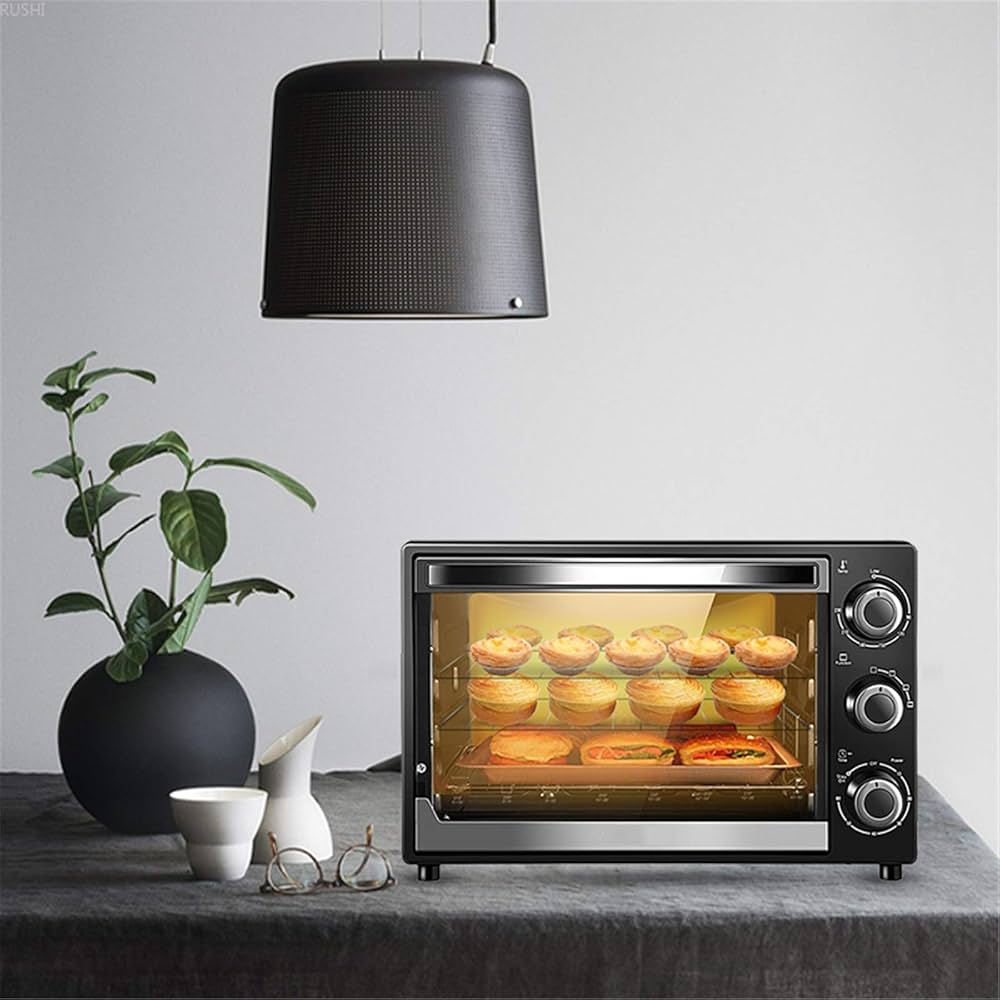Microwave ovens have revolutionized the way we cook and heat food, offering speed, convenience, and versatility that is hard to match. However, despite their widespread use, there are still many misconceptions and myths surrounding microwave ovens. From concerns about health risks to misunderstandings about how they actually work, these myths can create unnecessary worry or lead to improper usage.
In this article, we will explore some of the most common myths about microwave ovens and provide the facts to set the record straight. Whether you’re a seasoned user or just starting to use a microwave, understanding these myths versus facts can help you use your microwave more effectively and safely.
Myth #1: Microwaves Cause Cancer
One of the most persistent myths about microwave ovens is that they emit harmful radiation that can cause cancer. This myth stems from a misunderstanding of the type of radiation used in microwaves and how it interacts with food.
Fact: Microwave ovens use non-ionizing radiation, which is not harmful to humans.
Microwave ovens operate by using non-ionizing electromagnetic radiation, which causes water molecules in food to vibrate and produce heat. This is different from ionizing radiation, such as X-rays or gamma rays, which can cause cellular damage and increase the risk of cancer. Non-ionizing radiation is not strong enough to break molecular bonds or cause mutations in DNA, making it safe for use in cooking.
The microwave’s design also ensures that radiation stays inside the oven while it’s in operation. The metal mesh on the door prevents any radiation from leaking out, making it safe to stand near the appliance while it’s running.
Myth #2: Microwaving Food Reduces Its Nutritional Value
Another common belief is that cooking food in a microwave significantly reduces its nutritional value compared to other methods like boiling or steaming. People often worry that the microwave’s radiation “zaps” away essential nutrients.
Fact: Microwaving can actually help preserve nutrients in food.
Microwave cooking is not only safe but also efficient at retaining nutrients. Because microwaves cook food faster and use less water than other methods like boiling, they often preserve more vitamins and minerals. Nutrients like vitamin C, for example, are heat-sensitive and can break down during prolonged cooking. Since microwave ovens cook food quickly, they help retain more of these nutrients compared to traditional cooking methods.
The key to retaining nutrients is to avoid overcooking your food, regardless of the cooking method. Shorter cooking times and less water help minimize nutrient loss, and microwaving does just that.
Myth #3: Microwaving Food in Plastic Containers Releases Harmful Chemicals
A widespread concern is that heating food in plastic containers inside the microwave causes toxic chemicals like BPA (bisphenol A) to leach into the food, leading to potential health risks.
Fact: Using microwave-safe plastics is safe and does not release harmful chemicals.
It is true that not all plastics are created equal, and some can break down under high heat, releasing harmful chemicals. However, microwave-safe plastic containers are specifically designed to withstand the heat produced in a microwave oven without leaching chemicals into your food. Look for containers labeled “microwave-safe” or check the manufacturer’s guidelines to ensure that the container is safe for microwave use.
If you are concerned about using plastic, consider switching to glass or ceramic containers, which are not only microwave-safe but also more durable and environmentally friendly.
Myth #4: Standing Too Close to a Microwave Oven is Dangerous
Some people believe that standing too close to a microwave oven while it’s running can expose them to harmful radiation, even causing health issues over time. This myth likely stems from general concerns about radiation exposure and misunderstandings about how microwaves work.
Fact: Microwave ovens are designed to prevent radiation from escaping.
Modern microwave ovens are built with multiple safety features that prevent microwave radiation from escaping the oven. The microwave’s metal walls and the mesh screen on the door effectively contain the radiation inside the oven, where it cooks the food. The small holes in the mesh are too tiny for microwaves to pass through but large enough for you to see the food inside. This makes it safe to stand near a microwave oven while it’s in operation.
As long as your microwave is in good condition and the door seals properly, there is no risk of harmful radiation escaping, even if you’re standing close to it.
Myth #5: Microwaving Food with Metal Objects Will Cause the Oven to Explode
This is a popular myth often exaggerated in movies and TV shows, where placing metal objects in a microwave oven leads to explosions or fires. While it’s true that using metal in a microwave can cause sparks, the reality is more nuanced.
Fact: Metal can cause sparks but won’t necessarily damage the microwave or cause an explosion.
When metal objects are placed in a microwave oven, the microwaves can cause electric currents to form on the surface of the metal. This can lead to sparks, especially if the metal has sharp edges or points. While these sparks can potentially damage the microwave or cause small fires, they are unlikely to cause an explosion.
To avoid these sparks, it’s best to refrain from using metal containers, utensils, or aluminum foil in the microwave. Some newer microwave models come with metal racks or grills that are specially designed for use in microwaves, but always follow the manufacturer’s guidelines when using these accessories.

Myth #6: Microwaving Water Can Make It Explode
There have been occasional reports of superheated water “exploding” when taken out of the microwave and disturbed. This myth suggests that heating water in the microwave can make it spontaneously explode, causing burns or injury.
Fact: Superheating water is rare but can happen under specific conditions.
Superheating occurs when water is heated beyond its boiling point without forming bubbles, which happens when water is heated in a very smooth container in the microwave. When the container is moved or disturbed, the water can suddenly boil over, creating a risk of burns. While this is a rare occurrence, it’s important to be cautious when heating water in the microwave.
To prevent superheating, place a wooden stir stick or a microwave-safe object like a spoon in the water to help bubbles form and ensure that the water boils normally.
Myth #7: Microwaving Food Creates Harmful Radiation in Your Food
Some people believe that food cooked in a microwave becomes “irradiated” or contaminated with radiation, making it dangerous to eat. This myth arises from a fundamental misunderstanding of how microwaves work.
Fact: Microwaved food does not contain any harmful radiation.
Microwaves use electromagnetic waves to heat food, but these waves do not remain in the food after cooking. The radiation used in microwaving is non-ionizing, meaning it does not alter the molecular structure of the food in a harmful way. Once the microwave stops, the waves disappear, leaving no radiation in your food.
It’s important to note that microwaving food is just another form of heating, similar to using a stove or oven. The method of heating does not change the fundamental properties of the food in any dangerous way.
Myth #8: Microwaving Food in the Oven is Unhealthy
Some individuals believe that microwave ovens somehow degrade the quality of food, making it less healthy than food cooked using other methods. This myth may come from the assumption that the speed of microwave cooking results in poorly cooked or less nutritious meals.
Fact: Microwave ovens are a healthy way to cook food, preserving nutrients.
As mentioned earlier, microwave cooking actually helps retain more nutrients in food than some other cooking methods, such as boiling or frying. Because microwaves cook food quickly and don’t require large amounts of water or oil, vitamins and minerals remain intact. For example, steaming vegetables in the microwave can preserve more vitamin C and other nutrients than boiling them on the stove.
As with any cooking method, the healthiness of the food depends more on what you’re cooking and how you prepare it. Microwaves can help you prepare quick, healthy meals with minimal loss of nutrients.
Myth #9: Microwaves Can Only Be Used for Reheating
Many people think that microwave ovens are only good for reheating leftovers or popping popcorn. While it’s true that these tasks are convenient in a microwave, the oven’s capabilities go far beyond just reheating.
Fact: Microwaves are versatile and can be used for cooking a variety of dishes.
In addition to reheating food, microwave ovens can cook a wide range of dishes, from scrambled eggs to steamed vegetables, baked potatoes, and even some baked goods. Newer microwaves with features like convection and grilling capabilities can also roast, grill, and bake, offering even more versatility in the kitchen.
With the right techniques and microwave-safe cookware, you can prepare full meals using a microwave, making it an indispensable tool for busy households.
Conclusion
Microwave ovens have been surrounded by myths and misconceptions for years, but the truth is that they are safe, efficient, and highly versatile appliances. By understanding the facts, you can use your microwave with confidence, knowing that it preserves nutrients, cooks food safely, and offers a convenient way to prepare a variety of dishes.
Next time you encounter one of these myths, you’ll be equipped with the facts to dispel the confusion and make the most of your microwave oven.




